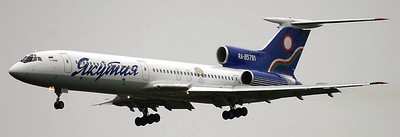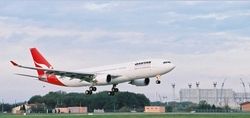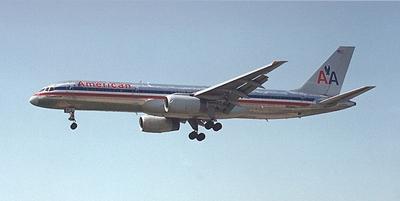They Also Cut Noise And Emissions
Recent flight trials have shown that an innovative Air Traffic
Management concept called Tailored Arrivals can improve efficiency
and reduce noise and emissions when aircraft land. The Air Traffic
Alliance (a grouping of European Aeronautic Defence and Space,
Airbus and Ales), Boeing, the Australian air carrier Qantas Airways
and Australian Air Navigation Service provider, Airservices
Australia jointly conducted the flight trials last year at airports
in Sydney and Melbourne, Australia.

In Tailored Arrivals, clearance instructions are transmitted
electronically to arriving aircraft, so that pilots and controllers
don’t have to engage in multiple voice communications. Linked
directly to an aircraft’s Flight Management System, the
electronic data guide the aircraft on a steady descent profile
along the most efficient path to its destination.
The Tailored Arrivals concept is one of several Air Traffic
Management approaches that the Air Traffic Alliance and Boeing are
supporting as part of an effort to improve interoperability and
coordination between air and ground systems around the world. "The
fact that Boeing and the Air Traffic Alliance have been cooperating
on this project shows our commitment to global interoperability."
said Kevin Brown, Boeing Phantom Works vice president and general
manager of Advanced Air Traffic Management. "Airlines should be
able to fly worldwide without needing special equipment or
procedures for each different region."
 During the flight trials, Qantas
aircraft – Airbus A330 and Boeing 747-400 – utilized
Tailored Arrivals at Sydney and Melbourne. Data link messages were
sent when the aircraft were in cruise flight about 140 miles from
the airports. The flight crews required no additional equipment or
special training to fly the Tailored Arrivals. They conducted more
than 70 flights from April through September, which completed Phase
1 of the program.
During the flight trials, Qantas
aircraft – Airbus A330 and Boeing 747-400 – utilized
Tailored Arrivals at Sydney and Melbourne. Data link messages were
sent when the aircraft were in cruise flight about 140 miles from
the airports. The flight crews required no additional equipment or
special training to fly the Tailored Arrivals. They conducted more
than 70 flights from April through September, which completed Phase
1 of the program.
Results from Phase 1 show that actual arrival times were as
little as 2 seconds and never more than 30 seconds off of
predictions made 40 minutes in advance. Radio voice communications
were nearly eliminated, which reduced the workload of controllers
and potential radio frequency congestion. Flight and simulation
data are expected to show that Tailored Arrivals could save between
400 and 800 pounds of fuel per flight, which adds up to more than
$100,000 per year per aircraft. Using less thrust during descent
also yields quieter operations, as well as reduced aircraft
emissions thus reducing environmental impact on final approach.
"The flights using Tailored Arrival procedures with existing
equipment on our Boeing and Airbus aircraft demonstrated that a
significant gain in operational efficiency is possible, " said
Capt. Murray Warfield, Qantas Airways general manager for
Regulatory and Industry Affairs. "We look forward to widespread
implementation of this capability." Airservices Australia Acting
CEO Hisham El-Ansary said that "the Australian trials have once
more shown that a cooperative approach in combination with
state-of-the-art systems makes major innovations feasible. Reduced
controller workload, more efficient operations, and less
environmental impact are all great results."
"Our cooperation in Australia clearly is an important milestone
towards truly interoperable systems," said Lionnel Wonneberger, Air
Traffic Alliance president. "But it is only the beginning; our
team, together with Boeing, is currently working on a number of
common issues facing air traffic modernization. You can expect to
see more results from this work reported throughout this year."

The Air Traffic Alliance is a grouping of EADS, Airbus and Ales,
combining leading industry forces to accelerate the evolution of
ATM Systems through the integration of air, ground and space
expertise. The Alliance is working to bring mutual benefits to
passengers, airspace users, air traffic service providers and
airports, while improving safety and security in a more efficient
air transport system.
The Boeing Phantom Works Advanced Air Traffic Management group
is dedicated to providing innovative solutions for dramatically
increasing the efficiency, safety and security of air traffic
systems throughout the world. Phantom Works is the advanced
research and development unit and catalyst of innovation for The
Boeing Company
 NTSB Final Report: Rutan Long-EZ
NTSB Final Report: Rutan Long-EZ ANN FAQ: Turn On Post Notifications
ANN FAQ: Turn On Post Notifications Classic Aero-TV: ICAS Perspectives - Advice for New Air Show Performers
Classic Aero-TV: ICAS Perspectives - Advice for New Air Show Performers ANN's Daily Aero-Linx (06.28.25)
ANN's Daily Aero-Linx (06.28.25) Aero-News: Quote of the Day (06.28.25)
Aero-News: Quote of the Day (06.28.25)





